In World of Warcraft, the conflict between the Horde and the Alliance in 2025 is still in full swing. This battle is central to the game’s lore and the gameplay.
Different servers have different numbers of Horde and Alliance players, which can change how battles and social stuff work. Knowing this can help new you pick the right side for them, based on how they like to play and who they want to play with. Nowadays most types of multi-player content allow cross-server teams (that’s why you can buy WoW boost if you play on any official server in the US or EU region), however even in The War Within your realm and faction still greatly matters.
WoW Alliance vs Horde Ratio: US and EU servers

EU Servers Analysis
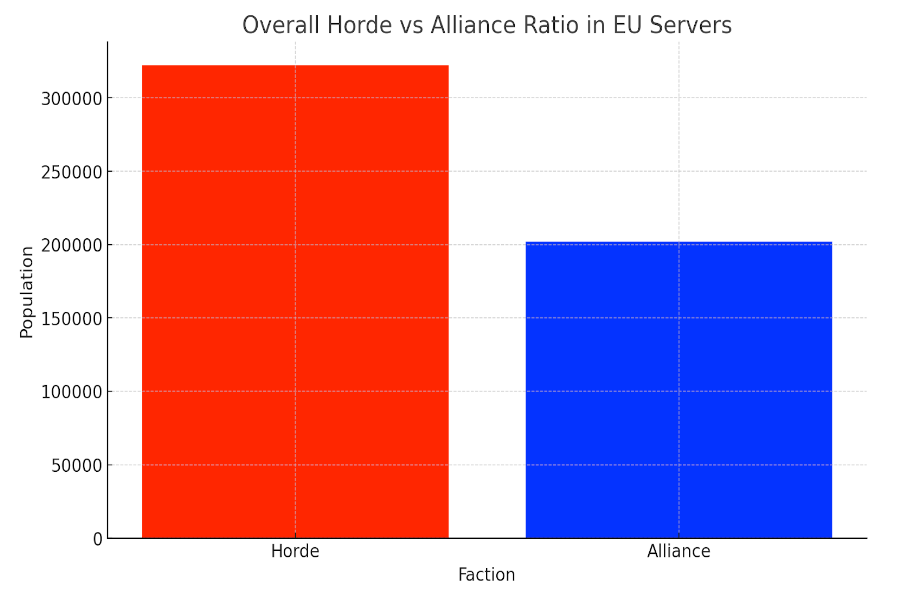
| # | Realm | Horde Population | Alliance Population |
| 1 | Connected Tarren Mill | 26,109 | 942 |
| 2 | Kazzak | 24,209 | 1,384 |
| 3 | Twisting Nether | 21,311 | 710 |
| 4 | Connected Drak’thul | 7,092 | 2,164 |
| 5 | Draenor | 30,204 | 1,170 |
| 6 | Ревущий фьорд | 18,481 | 317 |
| 7 | Blackrock | 10,806 | 392 |
| 8 | Ragnaros | 11,440 | 998 |
| 9 | Connected Mal’Ganis | 18,505 | 696 |
| 10 | Silvermoon | 444 | 29,324 |

US Servers Analysis
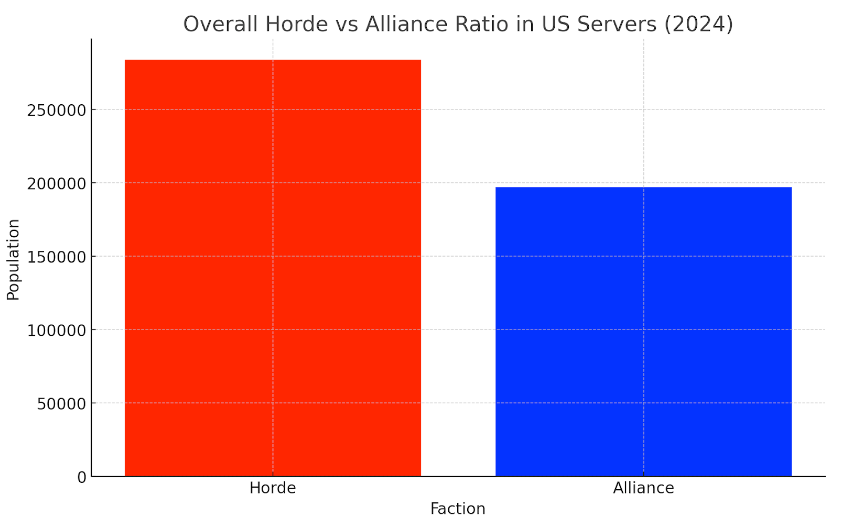
| # | Realm | Horde Population | Alliance Population |
| 1 | Illidan | 30,656 | 1,413 |
| 2 | Connected Jubei’Thos | 3,292 | 17,371 |
| 3 | Mal’Ganis | 17,701 | 704 |
| 4 | Area 52 | 36,355 | 1,564 |
| 5 | Tichondrius | 17,608 | 2,382 |
| 6 | Zul’jin | 17,435 | 2,160 |
| 7 | Sargeras | 1,233 | 14,610 |
| 8 | Thrall | 18,061 | 582 |
| 9 | Bleeding Hollow | 7,896 | 600 |
| 10 | Stormrage | 366 | 29,395 |

Advice for Players Based on Server Analysis
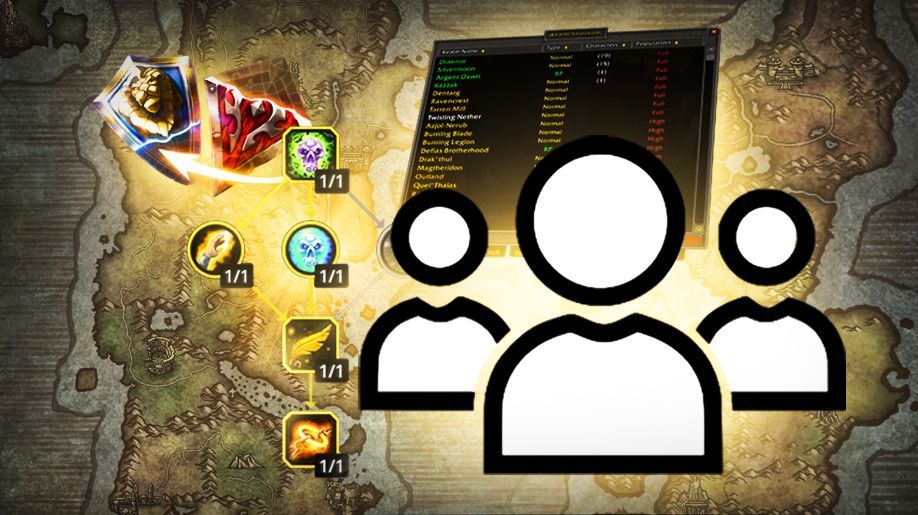
- Choosing Your Faction: If you’re playing in the EU, the choice between Horde and Alliance can be more about personal preference or aesthetics, as the balance between the two factions offers a level playing field. In the US, however, aligning with the Horde could be beneficial if you seek a more populated faction with potentially more opportunities for group content.
- Server Selection: For both EU and US players, opting for one of the top 10 most populated servers could be advantageous if you’re looking for an active community. These servers are likely to have more guilds, regular raids, and PvP activities. However, if you prefer a less crowded environment, where competition for resources is lower, choosing a server outside the top 10 could be a better fit.
- PvP vs. PvE Considerations: The faction and server choice can also impact your PvP and PvE experience. In balanced servers, PvP encounters might be more challenging and engaging, while PvE content could benefit from a diverse community. In servers where one faction dominates, PvP might be tougher for the minority faction, but PvE activities could be more accessible due to a larger pool of players.
- Community Engagement: Joining a more populated server or faction can enhance your opportunities for community engagement. This aspect is crucial for players who value social interactions, guild participation, and cooperative gameplay.
The information was based on the official realms population list found at https://www.wowprogress.com/
Choosing Your WoW Faction: A Lore-Based Approach
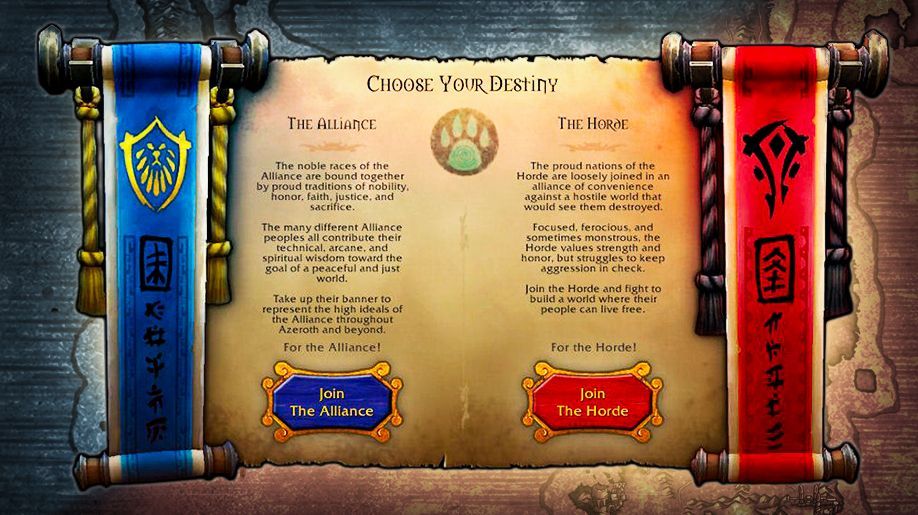
- The Alliance started with humans from Stormwind teaming up with dwarves from Ironforge, elves from the forest, and gnomes who love inventing stuff. They later welcomed Draenei, refugees from another world, and even cursed humans from Gilneas.
- The Horde began with Orcs from Draenor, who came through a dark portal to conquer Azeroth. But they broke free from evil magic and united with Trolls, Tauren, and the Forsaken. Later, they added sneaky Goblins and ancient Pandaren to their ranks. The Horde respects strength and honor.
- In PvE the Alliance and Horde tend to team up to save the world. These moments show that even enemies can work together when things get really bad. It’s a cool part of the game’s story where heroes from both sides fight side by side against huge threats.
- But in PvP, especially World PvP, the old conflict between the Alliance and the Horde takes center stage. Here, players face off against each other, bringing the big factional conflict to life. PvP in WoW is very skill-based and makes the game exciting and competitive. However, as you understand, if you choose a faction that is outnumbered, your gameplay, even daily PvE routines, will greatly change.
- WoW Dragonflight Horde and Alliance Races Table
| Horde Races | Alliance Races |
| Orc | Human |
| Undead (Forsaken) | Dwarf |
| Tauren | Night Elf |
| Troll | Gnome |
| Blood Elf | Draenei |
| Goblin | Worgen |
| Pandaren* | Pandaren* |
| Nightborne | Void Elf |
| Highmountain Tauren | Lightforged Draenei |
| Mag’har Orc | Dark Iron Dwarf |
| Zandalari Troll | Kul Tiran |
| Vulpera | Mechagnome |
| Dracthyr (Both Factions) | Dracthyr (Both Factions) |
Note: Pandaren can choose to join either the Horde or the Alliance, and the Dracthyr race is available for both factions.
Cross-Faction and Cross-Server Evolution

- A monumental shift occurred with the cross-faction guilds system, a more recent addition to WoW. While there had been minor cross-faction interactions in specific scenarios, the concept of a joint guild system for Horde and Alliance players significantly departed from the game’s traditional faction divide. This feature was introduced in the “Shadowlands” expansion, specifically in the 9.2.5 update, released in May 2022. It allowed players from both factions to join the same guild, fostering a new level of cooperation and camaraderie that transcended factional boundaries.
- In PvE, the impact of cross-faction play was profound. Players from the Horde and Alliance could team up for various activities, including dungeons, raids, and quests. This change, also part of the 9.2.5 update in “Shadowlands,” brought a cooperative dimension to the game, enabling players to unite against common enemies, regardless of faction.
- In PvP, however, the classic Horde vs. Alliance rivalry remains largely intact. Despite the cross-faction advancements in other game areas, PvP content like battlegrounds and arenas continues to uphold the traditional faction conflict, preserving the competitive spirit that has been a core aspect of WoW since its inception.
- The concept of cross-server raiding in WoW has its roots in the Dungeon Finder, introduced in patch 3.3.0, “Fall of the Lich King,” in December 2009. This system initially allowed players to form groups for dungeons across servers. Building on this, the Raid Finder (LFR) was introduced in patch 4.3.0, “Hour of Twilight,” in November 2011, enabling players to experience raid content with others from different servers in a more casual setting.
- Blizzard expanded the cross-server functionality to Normal and Heroic raid difficulties as the game progressed, allowing a broader spectrum of players to join forces regardless of their server. This was a significant step in making high-level content more accessible to the vast player base.
- In the “Dragonflight” expansion, cross-server raiding continues to be a vital feature. The system allows players to engage in LFR, Normal, and Heroic raid difficulties with others from different servers, facilitating a diverse and dynamic raiding environment. This benefits players on less populated servers or those seeking specific group compositions.
- WoW typically restricts cross-server raiding for Mythic difficulty until a certain number of guilds have completed the raid on each server. This restriction is lifted, enabling cross-server groups for the highest difficulty level. This approach balances the competitive aspect of Mythic raiding with the community’s desire for broader accessibility.
- WoW has also implemented a cross-server Looking for Group (LFG) system alongside cross-server raiding. This feature allows players to find groups for Mythic+ dungeons, quests, and PvP content, across different servers.
- The introduction of cross-server raids and cross-faction guilds in WoW marks critical milestones in the game’s history. The Dungeon Finder and Raid Finder feature, cross-faction guilds, and gameplay in Shadowlands represent significant steps towards a more integrated and unified WoW experience while maintaining the essence of factional competition in PvP.
Our Thoughts
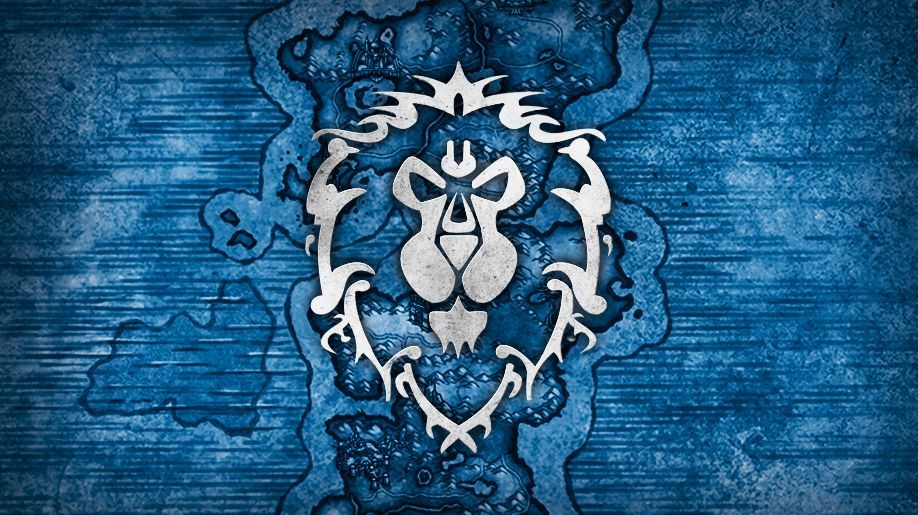
In 2024, understanding the dynamics of the Horde and Alliance factions on the EU and US World of Warcraft servers becomes crucial. The populations vary, affecting everything from daily World PvP to finding the right guild or raid group. This knowledge is priceless for the new players, as it allows you to choose a faction that brings benefits and convenience during daily gaming.
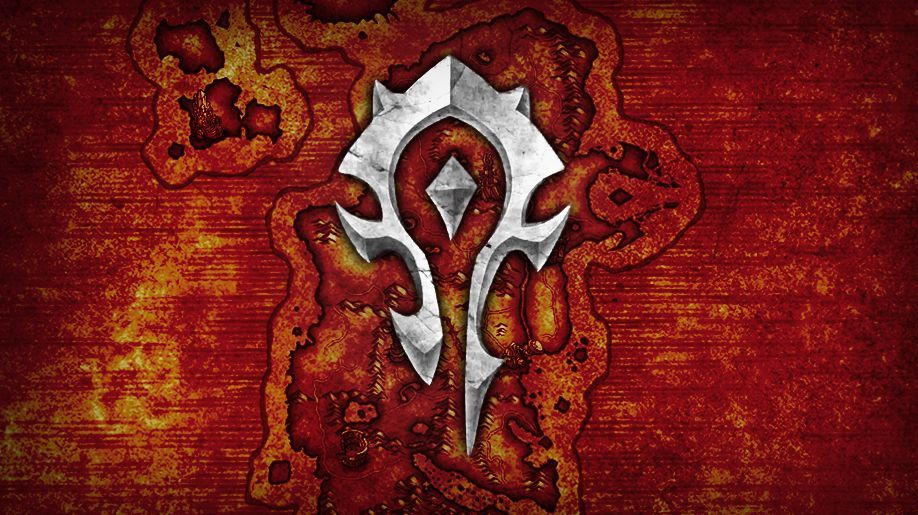






Comments: